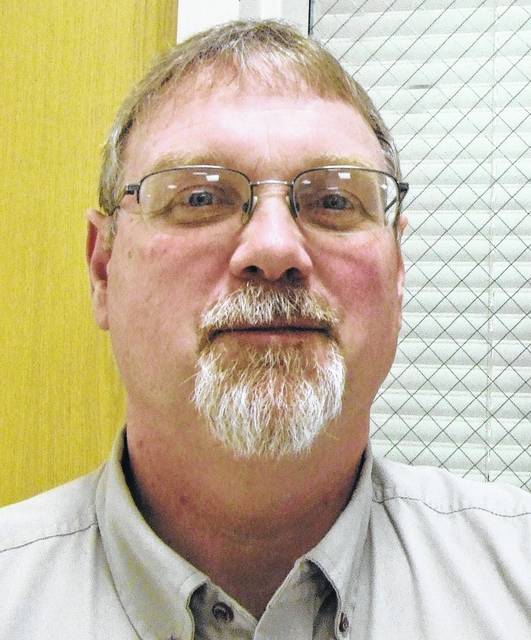
The cold blast this week has brought up a lot of discussion about the 1978 Blizzard here in Ohio. I believe Jan. 25 was the anniversary date for that Titanic weather event.
I realize we had some extreme cold a few days this week but it certainly was nothing like the 1978 Blizzard. I guess that is the silver lining. I hope none of us have to experience such a weather event like that again.
Besides the weather outside, the agricultural environment has gotten a little unstable for some farm families and the outlook for some sectors of the industry are not looking real pretty for the coming year. This may mean a visit to your lender to have some serious discussion about finances.
In a recent OSU CORN newsletter, Chris Zoller, Extension Educator for Agriculture and Natural Resources in Tuscarawas County shared some really good insight in preparing for that visit:
Financial forms
A year-end balance sheet is very helpful and provides a snapshot of the assets, liabilities, and net worth of your farm. Get in the habit of completing one each year for your lender to keep on file and for your own reference so you can monitor changes over time.
You can get a blank balance sheet from your lender or access one here: https://farmoffice.osu.edu/farm-management-tools/farm-management-resources.
Cost of production
Know your cost of production. What does it cost you to produce 100 pounds of milk? What is your per acre or per ton cost to grow and harvest crops?
If you need assistance with determining these, please see: https://farmoffice.osu.edu/ for copies of Ohio State University Extension production budgets and https://farmprofitability.osu.edu/business-summaries for copies of the Ohio Farm Business Summaries.
Goals
Why are you requesting money from your lender? What is your goal(s)? What are you hoping to accomplish with the money you are requesting?
Will you use the money as an operating loan to plant your crops? Are you planning an expansion? Are you wanting to consolidate existing debt?
Regardless of the reason, your lender is going to need to know how you plan to repay the loan. Budget and cash flow projections will help everyone understand how the money will be used and how it will be repaid. Research has proven that you are more likely to accomplish your goals if they are written. Be sure your goals are Specific, Measurable, Attainable, Rewarding, and Timed (SMART).
There is a great fact sheet, Developing Goals for the Agricultural Business, you can find at: https://ohioline.osu.edu/factsheet/node/767.
Tax returns
Your lender may request copies of your tax returns. Make sure you categorize income and expenses the same way each year. This allows the lender to compare apples-to-apples when evaluating your historic income and expenses.
Also, if you pre-pay expenses or defer income, make sure your lender is aware of this so they can make accrual adjustments.
Communication
Communication with your lender is critical. Your lender is interested in understanding your farm, knowing how you are progressing, and what your plans are for the short and long-term.
Invite your lender to visit the farm for a tour, a ride in the tractor, or to assist with milking!
Business plan
Every lender would love to see each client have a written business plan. A business plan is made up of five parts: Executive Summary, Description, Operations, Marketing Plan, and Financial Plan.
The University of Minnesota Extension has a template available at the following site: https://agplan.umn.edu/.
Summary: The items discussed in this article are ones you can control. Focus on these areas and make adjustments accordingly to make improvements.
Contact your local Extension Educator or the Ohio State University Extension Farm Profitability Program for assistance.
Resources Chris used for this article include:
The Basics of a Farm Balance Sheet, OSU Extension Fact Sheet ANR-64; Seven Tips for a Strong Marketing Plan, American Bankers Association; Tips for Working with Your Lender, University of Minnesota Extension, Learn to Talk Like Your Banker, Greg Meyer, OSU Extension, Warren County, (Originally published in Farm and Dairy, Jan. 24, 2019).
If you have any questions concerning this article and would like these resources, be sure to let me know by calling me at the Clinton County Extension office at 937-382-0901 or email me at [email protected].
Finally, it is tax time and we do have available in a printed form the Ohio Farmers Tax Guide. This is a free IRS publication that can help you and your tax professional with your tax preparation.
Stop by the Clinton County Extension office for your copy at 111 S, Nelson Ave., Wilmington.
Sorry, but we can’t send it in the mail due to the size of this bulletin.
Tony Nye is the state coordinator for the Ohio State University Extension Small Farm Program and has been an OSU Extension Educator for agriculture and natural resources for over 30 years, currently serving Clinton County and the Miami Valley EERA.


